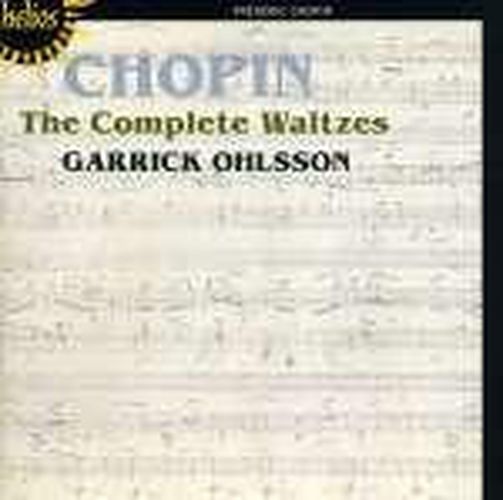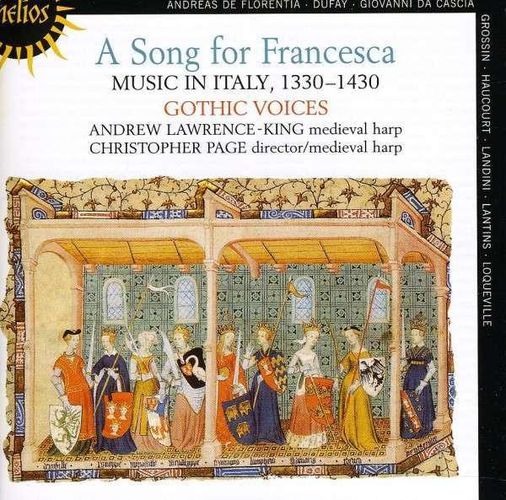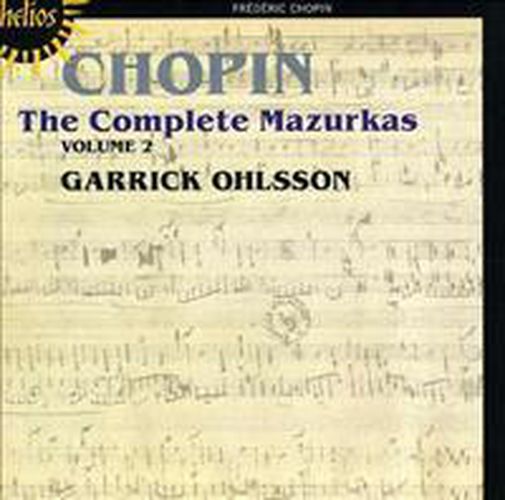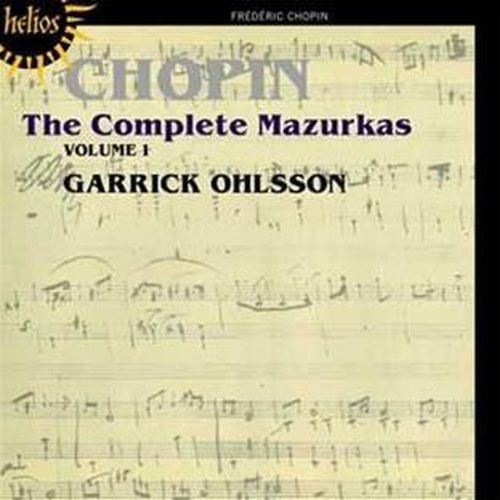Chopin Complete Walzes
Ohlsson Garrick

Chopin Complete Walzes
Ohlsson Garrick
Catalogue # CDH55381
Chopin:
Waltzes Nos. 1-19
Waltz No. 20 in F sharp minor, Op. posth., KK Ib/7 ‘Mélancolique’
Contredanse in G flat major, KKAnh.Ia/4
3 Écossaises, Op. 72 No. 3
The lilting waltz form we know today is derived from the Drehtanz and the Ländler, two lusty peasant dances from Germany and Austria. By the late 1770s classical composers had begun to write refined versions of the form with the three strong beats to the bar giving way to a strong downbeat and two faint afterbeats. Schubert brought the waltz to its first high point in the early 1800s. Its structure—a chain of uncomplicated melodies over a simple accompaniment—and this new lightness of rhythm led to a dance craze that swept the ballrooms of Europe.
The waltz reached Warsaw in the early years of the nineteenth century. As a teenager, Chopin would have known the piano waltzes of Polish composers like Maria Szymanowska, Kurpinski, Dobrzynski and Stefani. As far as the piano was concerned, the most important reference point was Weber’s ground-breaking Invitation to the Dance (1819). Chopin’s earliest waltzes were not written until 1829 (he had already composed some thirteen mazurkas and polonaises), by which time the waltzes of Joseph Lanner and Johann Strauss the Elder were all the rage. A year later, Chopin left Poland and arrived in Vienna, the Waltz City, before making his permanent home in Paris. Paradoxically, almost all of the twenty waltzes he would eventually compose are more Gallic in character than Viennese, far removed from those of Lanner and Strauss.
Only eight were published in Chopin’s lifetime. The two Waltzes Op 69, three Waltzes Op 70 and six of the seven early waltzes without opus numbers were all published posthumously. Outstanding among these are the poetic Op 69 No 2 in B minor and Op 70 No 3 in D flat major, inspired by his youthful love for the singer Konstancja Gladkowska and composed, according to Chopin, ‘early this morning’ (3 October 1829). Of all the posthumous waltzes rescued for posterity, we must be most grateful for the dazzling waltz in E minor (1830). As with the Fantaisie-Impromptu Op 66 it is a mystery why Chopin overlooked it; with its bravura introduction and coda and its spirited motifs this waltz has all the hallmarks of a mature work.
The first waltz that Chopin authorized to be published, the Grande valse brillante in E flat major Op 18, was written in Vienna in 1830. It differs from most of the others in that it can actually be danced to, reflected by its inclusion in the ballet Les Sylphides (the only others are Op 64 No 2 and Op 70 No 1); the mature waltzes are, generally, more like ‘dance poems’. It also presages the consistently high standard of the seven subsequent waltzes—unlike most contemporary examples, these are no mere pot-boilers churned out to please publishers and amateur pianists alike (though most of Chopin’s are not beyond the reach of good amateurs).
In welcoming the three Waltzes Op 34 in 1838 Schumann wrote, ‘[They] will delight above all things, so different are they from the ordinary ones, and of such a kind as only Chopin dare venture on or even invent, while gazing inspired among the dancers … Such a wave of life flows through them that they seem to have been improvised in the ballroom.’ No 1 in A flat major revisits many of the rhythmic and motific ideas of Op 18; No 2 in A minor opens with a haunting, melancholic, cello-like melody and was Chopin’s own favourite; No 3 in F major is memorable for the moto perpetuo passagework and cross-rhythms of its outer sections and the sequence of acciaccaturas in the middle.
Wilhelm von Lenz reported that, according to Chopin himself, the Waltz in A flat major Op 42, ‘springing from the eight-bar trill, should evoke a musical clock. In his own performances it embodied his rubato style to the fullest; he would play it as a continued stretto pianissimo with the bass maintaining a steady beat. A garland of flowers winding amidst the dancing couples!’
The final group of three Waltzes Op 64, published in 1847, opens with the waltz in D flat otherwise known as the ‘Minute Waltz’, one of the best-known works in the entire literature of the piano. Its hackneyed status should not detract from the miracle of its economy and invention. (Despite its nickname, it is impossible to play the waltz in a minute, at least not musically.) No 2 of the set in C sharp minor alternates between a lovesick opening theme, a rapid quaver passage with echoes of Op 42 and a tender nocturne-like theme in D flat. These two contrasted miniature masterpieces are followed by a further Waltz in A flat, less well known but with a graceful, insinuating theme of wistful regret.
To complete this disc, Garrick Ohlsson plays four short and relatively unimportant dance miniatures, all published posthumously: the Contredanse in G flat major was composed in 1827 but did not appear in print until 1943, while the three Ecossaises Op 72 No 3 (D major, G major, D flat major) date from 1826. The écossaise was originally a Scottish dance in 2/4 time, a form that had earlier attracted Beethoven and Schubert.
This item is not currently in-stock. It can be ordered online and is expected to ship in approx 4 weeks
Our stock data is updated periodically, and availability may change throughout the day for in-demand items. Please call the relevant shop for the most current stock information. Prices are subject to change without notice.
Sign in or become a Readings Member to add this title to a wishlist.





